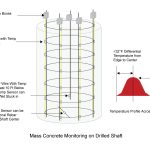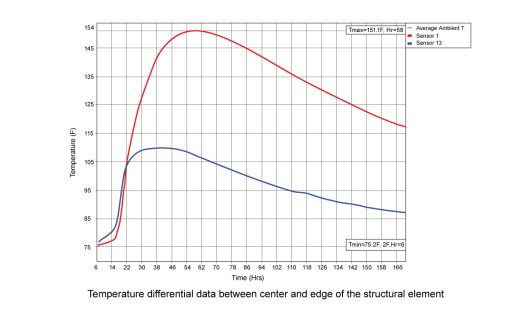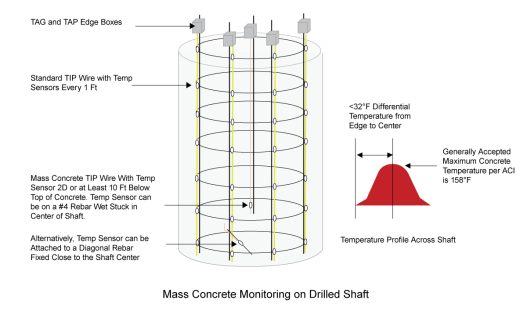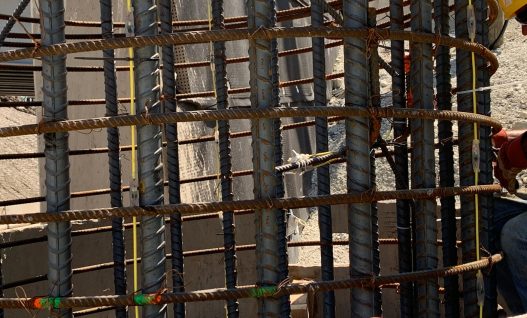Mass Concrete Monitoring with Thermal Integrity Profiling
Mass Concrete Monitoring
The American Concrete Institute (ACI) defines mass concrete as any volume of structural concrete in which a combination of dimensions, boundary conditions, characteristics of the concrete mixture, and the ambient conditions can lead to undesirable thermal stresses, cracking, deleterious chemical reactions, or reduction in the long-term strength as a result of elevated concrete temperature due to heat of hydration. Structural elements considered as mass concrete may be subject to monitoring to address two main concerns:
- Peak Temperatures – Excessive temperatures can destroy primary ettringite, which is replaced by harmful secondary delayed ettringite formations, or DEF. This formation can then expand, crack, and otherwise damage concrete. The generally accepted maximum concrete temperature per ACI is 158° F (70° C). Concrete curing temperatures above this can allow for formation of DEF.
- Differential Temperatures – Differential concrete temperatures between the structural element center and edge yield changes in volume that can cause cracks in concrete. The maximum differential temperature per ACI is 35°F (19° C), although the allowable differential temperatures can generally be greater on confined (permanently cased) elements.
Recently, drilled shafts with diameters as small as 4 feet have been treated as mass concrete elements. When Thermal Integrity Profiling (TIP) is utilized for integrity testing purposes, adding Thermal Wire® cables to measure temperature at or near the shaft center can allow for mass concrete monitoring. The cost for the additional Thermal Wire cables and sensors is minimal and allows for remote data collection of maximum temperatures and maximum differential temperatures, with concrete curing.
GRL Engineers have performed mass concrete monitoring on various projects with the Indiana Department of Transportation, the Illinois Department of Transportation, the Illinois Tollway Authority, the Ohio Department of Transportation, and the Washington State Department of Transportation.






